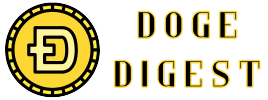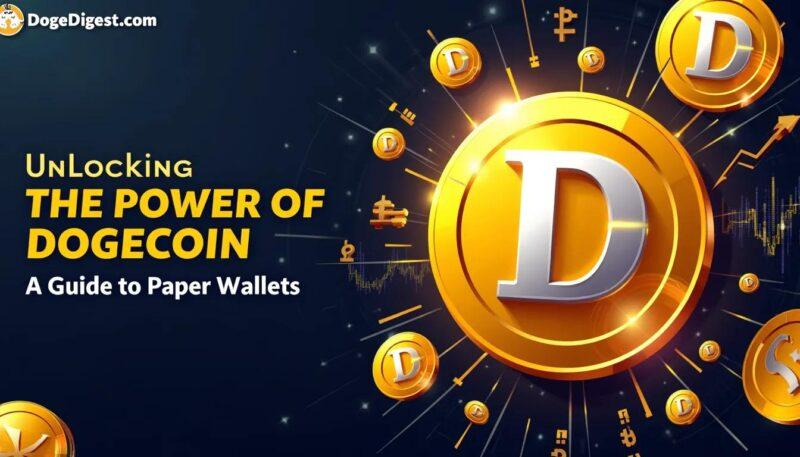In the ever-evolving world of cryptocurrency, Dogecoin has emerged from its humble beginnings as a playful meme coin to a serious contender in the digital finance landscape. Yet, as its popularity soars, questions about its ability to handle increased demand come to the forefront. Unlocking Dogecoin’s future hinges on addressing one critical challenge: scalability. This article delves into the innovative solutions poised to enhance Dogecoin’s capacity, ensuring that this spirited cryptocurrency can sustain growth and remain a viable player in the rapidly expanding crypto ecosystem.
Understanding Dogecoin’s Current Scalability Challenges
Dogecoin’s legacy as a fun and community-driven cryptocurrency has also highlighted some inherent limitations in its current architecture. Primarily, its transaction throughput struggles when faced with increasing adoption, leading to slower confirmation times and higher fees during network congestion. Unlike some newer blockchain projects designed with high scalability in mind, Dogecoin’s base protocol, built on a Proof-of-Work consensus and inheriting Litecoin’s block size and timing parameters, can become a bottleneck under heavy transaction loads.
Several key factors contribute to these constraints:
- Block Size & Time: Dogecoin’s 1 MB block size and 1-minute block time limit the number of transactions processed per second.
- Network Decentralization: While decentralization is fundamental, it can reduce transaction speeds compared to more centralized networks optimized for throughput.
- Consensus Mechanism: The Proof-of-Work system, though secure, inherently caps transaction processing speed due to the mining difficulty adjustments.
| Metric | Dogecoin Current | Ideal Scalability Goal |
|---|---|---|
| Block Size | 1 MB | 4-8 MB |
| Block Time | 1 Minute | 10-20 Seconds |
| Transactions/sec | ~33 | >200 |
Addressing these limitations requires innovative scaling solutions that do not compromise Dogecoin’s core principles of accessibility and security. Layer 2 technologies, such as payment channels or sidechains, offer promising avenues to dramatically increase throughput without demanding drastic changes to the underlying protocol. As the network evolves, balancing the trade-offs between speed, decentralization, and user experience will be critical for setting Dogecoin on a path to sustainable and widespread utility.
Evaluating Layer Two Solutions for Enhanced Transaction Speed
Layer Two solutions aim to address Dogecoin’s scalability challenges by processing transactions off the main blockchain, thereby reducing congestion and fees while maintaining security. Among these, state channels and rollups stand out as promising contenders. State channels allow users to transact instantly by opening a private channel that periodically settles on the main chain, ensuring rapid and low-cost exchanges. On the other hand, rollups bundle multiple transactions together, posting only compressed data to the base layer for validation, which dramatically enhances throughput without compromising trustlessness.
Each approach carries unique trade-offs in terms of complexity, security guarantees, and user experience. For example, state channels require users to remain online to manage the channel, which can be limiting for everyday transactions. Rollups, however, offer a more seamless experience but demand sophisticated smart contract infrastructure and are still evolving on Dogecoin’s network. Balancing these elements is crucial to foster usability while safeguarding Dogecoin’s decentralized ethos.
| Solution | Transaction Speed | Security | User Requirements |
|---|---|---|---|
| State Channels | ~Instant | High (off-chain risk managed) | Stay online during usage |
| Optimistic Rollups | High (batch processing) | Strong (fraud proofs) | Minimal active management |
| ZK-Rollups | Very high | Very strong (zero knowledge proofs) | Minimal, emerging tools |
- Latency reduction: Essential for real-time Dogecoin payments and microtransactions.
- Cost efficiency: Keeping transaction fees near zero ensures mass adoption.
- Interoperability: Smooth integration with existing Dogecoin wallets and exchanges.
Integrating Sharding Techniques to Boost Network Efficiency
Sharding offers a revolutionary approach to network scalability by dividing the blockchain into smaller, manageable pieces called shards. Each shard processes its own transactions and smart contracts, significantly reducing the load on individual nodes. This parallel processing model allows Dogecoin’s network to handle more transactions simultaneously, alleviating congestion issues that have slowed down its growth in the past.
Implementing sharding in Dogecoin requires careful synchronization across shards to maintain security and consensus. However, the benefits are compelling: improved transaction throughput, decreased latency, and lower resource demands on validators. This efficiency boost not only enhances user experience but also paves the way for new decentralized applications that demand faster and cheaper transactions.
| Shard Component | Function | Benefit |
|---|---|---|
| Transaction Partition | Splits transaction processing across shards | Increases parallelization |
| Cross-Shard Communication | Ensures data consistency between shards | Maintains security |
| Validator Rotation | Randomly changes node assignments | Prevents shard collusion |
- Scalable throughput: By parallelizing workload, the network scales more linearly as nodes grow.
- Cost efficiency: Reduced resource usage per node lowers participation barriers.
- Enhanced resilience: Network partitions don’t stall the entire blockchain.
The Role of Community Governance in Driving Scalability Innovations
The heartbeat of Dogecoin’s transformative scalability journey lies in a vibrant, engaged community that doesn’t merely observe but actively shapes the protocol’s evolution. Community governance pushes beyond traditional top-down approaches by empowering stakeholders to propose, debate, and vote on innovations that can accelerate transaction speeds and enhance network capacity. This decentralized participation ensures that scalability solutions are both practical and aligned with the vision of the people who use Dogecoin daily.
Harnessing this collaborative spirit, the Dogecoin community has fostered a culture of experimentation and shared responsibility. Key contributors-from coders to enthusiasts-drive forward initiatives such as layer-two solutions and optimized transaction frameworks. Their input is often collated through:
- Open forums: Transparent discussions that welcome diverse perspectives on prospective upgrades.
- Proposal platforms: Structured environments where new ideas undergo rigorous vetting before integration.
- Voting mechanisms: Democratic processes where the majority consensus directs which scalability features are prioritized.
| Governance Element | Role in Scalability | Community Impact |
|---|---|---|
| Proposal Submissions | Source of innovative scalability designs | Encourages participation and fresh ideas |
| Consensus Voting | Determines feature adoption speed | Ensures decisions reflect majority interest |
| Feedback Loops | Allows iterative refinement of solutions | Maintains alignment with user needs |
Strategic Recommendations for Sustainable Growth and Adoption
To ensure Dogecoin scales sustainably, it’s essential to focus on layer-two solutions that can alleviate network congestion and amplify transaction throughput without sacrificing decentralization. Integrating technologies like the Lightning Network can drastically reduce fees and confirmation times, positioning Dogecoin as a more practical medium of exchange in everyday commerce. Combining this with strategic partnerships across payment platforms will accelerate adoption, making microtransactions seamless for users worldwide.
Another critical strategy involves fostering a developer-friendly ecosystem. By sponsoring hackathons, grants, and open-source collaborations, the Dogecoin community can fuel innovative scalability projects tailored to its unique blockchain attributes. Empowering developers with enhanced tools and comprehensive documentation not only stimulates creative solutions but also builds long-term resilience through diversified scalability approaches, ensuring the network adapts to evolving usage patterns.
Lastly, a transparent and coordinated approach to future upgrades is paramount. Establishing clear roadmaps with community input helps maintain trust and aligns stakeholders on realistic scalability milestones. Below is a simplified table summarizing potential scalability milestones and their impact on Dogecoin’s growth:
| Milestone | Expected Benefit | Timeline |
|---|---|---|
| Lightning Network Integration | Faster & cheaper transactions | 6-12 months |
| API & Developer Toolkit Release | Enhanced developer engagement | 3-6 months |
| Community-Driven Soft Fork | Optimized protocol performance | 12-18 months |
- Prioritize multi-layer scalability tech to balance speed and security.
- Engage and reward developers for continuous innovation.
- Maintain ongoing dialogue with the community about upgrade plans.
Q&A
Q&A: Unlocking Dogecoin’s Future – Exploring Scalability Solutions
Q1: What makes scalability a crucial topic for Dogecoin’s future?
A1: As Dogecoin gains popularity beyond its meme origins, the ability to handle a growing number of transactions swiftly and efficiently becomes vital. Scalability ensures the network can support increased user activity without delays or prohibitive fees, securing Dogecoin’s place as a practical and accessible digital currency.
Q2: How does Dogecoin currently handle transactions, and where are the bottlenecks?
A2: Dogecoin’s transactions are processed on its own blockchain, which inherits Bitcoin’s core design with modifications for faster block times. Although quicker than some cryptocurrencies, Dogecoin’s network still faces limitations in transaction throughput and scalability, leading to potential slowdowns during surges in activity.
Q3: What are layer-1 solutions, and could they help Dogecoin scale?
A3: Layer-1 solutions involve fundamental changes to the Dogecoin blockchain itself-like increasing block size or optimizing consensus algorithms. While these changes directly enhance capacity, they often require broad community agreement and carry risks of network instability.
Q4: What role do layer-2 solutions play in solving Dogecoin’s scalability challenges?
A4: Layer-2 solutions build atop the existing Dogecoin blockchain, enabling off-chain transactions that settle back onto the main chain. This approach greatly reduces congestion and fees. For Dogecoin, integrating technologies like payment channels or sidechains could unlock fast, low-cost transfers without altering the base layer.
Q5: Are there projects currently exploring scalability for Dogecoin?
A5: Yes, several initiatives aim to boost Dogecoin’s scalability by leveraging layer-2 frameworks and improving interoperability with other blockchains. These projects focus on user-friendly implementations to maintain Dogecoin’s ethos of accessibility and community-driven growth.
Q6: How might scalability improvements impact Dogecoin’s ecosystem and adoption?
A6: Enhanced scalability could bolster Dogecoin’s usability in everyday transactions, from tipping to retail payments. Lower fees and faster confirmation times would attract more users, developers, and businesses, potentially transforming Dogecoin from a novelty asset into a widely accepted medium of exchange.
Q7: What challenges stand in the way of implementing these scalability solutions?
A7: Technical complexity, community consensus, and ensuring security remain significant hurdles. Balancing innovation with network stability requires meticulous planning and collaboration among developers, miners, and stakeholders to safeguard the integrity of Dogecoin.
Q8: Looking ahead, what is the vision for Dogecoin’s scalable future?
A8: The vision is a robust, efficient, and user-friendly Dogecoin network that preserves its inclusive, fun spirit while empowering a vast array of transactions worldwide. Scalability solutions are the key to unlocking this potential, paving the path for Dogecoin’s evolution from meme coin to mainstream digital currency.
Closing Remarks
As the journey to unlock Dogecoin’s future continues, scalability remains both a challenge and an opportunity-a puzzle inviting innovators to weave speed and efficiency into the fabric of this beloved cryptocurrency. Whether through layer-two protocols, sharding, or novel consensus mechanisms, the path forward promises to redefine what Dogecoin can achieve. While the road is still unfolding, one thing is certain: the pursuit of scalability isn’t just about handling more transactions; it’s about empowering a community and redefining digital value in an ever-evolving crypto landscape. Only time will tell which solutions will rise to the occasion, but the momentum driving Dogecoin’s evolution is undeniable-and that’s a story worth watching.






